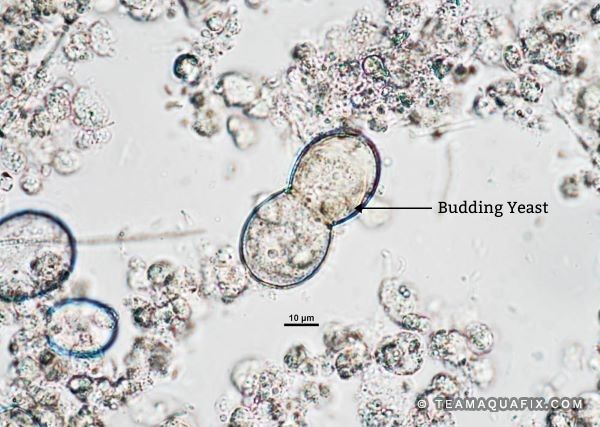
Yeast can occasionally cause foaming and issues with TSS.
To treat yeast we recommend increasing the pH to 7 using a basic pH adjuster such as Boost N Lock. If you are concerned about your plant conditions contact a technical rep for information and recommendations.
Budding yeast has the appearance of the number eight or peanut shell and typically has a diameter ranging from 30 µm to 60 µm. Yeast is predominantly an indicator organism for low pH conditions (~6.5) within a plant. It can compete with bacteria in low pH conditions and can cause issues with TSS. On rare occasions, yeast has also been known to cause foaming. Yeast is common in systems accepting brewery and bakery wastewater; it thrives in conditions with high levels of soluble organic carbon.
A municipal plant was experiencing a cloudy effluent and was unsure of the cause. Upon microscopic analysis, an abundance of budding yeast was observed, which was causing the cloudy effluent. We traced the problem back to a malting facility which had their own treatment facility. We adjusted the pH at the malt facility to prevent the further growth of yeast, and VitaStim Rebuild was used at the municipal plant to help promote proper reflocculation.

39041 RGE RD 283,
Red Deer County, AB T4E 0M2
Phone: 1-888-466-0031 |
Fax: 1-888-507-9716
To place an order, please fill out the required fields below and proceed to checkout. Ensure all information is accurate, and feel free to contact our support team if you have any questions or need assistance. Thank you for choosing us!